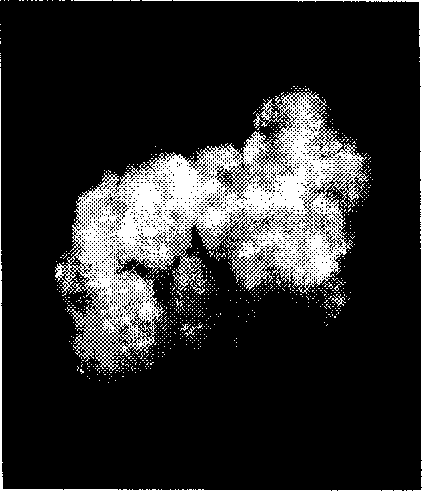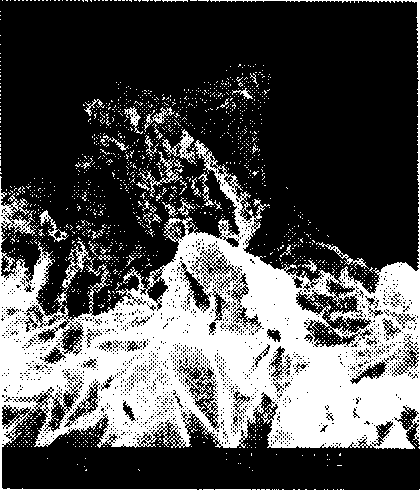Method for improving cold resistance of zoysia
A technology of zoysia and cold resistance, which is applied in the field of improving plant stress resistance, and can solve the problems of difficult breeding methods and other problems of zoysia breeding
- Summary
- Abstract
- Description
- Claims
- Application Information
AI Technical Summary
Problems solved by technology
Method used
Image
Examples
Embodiment 1
[0056] Embodiment 1, the cultivation of the zoysia grass that cold resistance improves
[0057] Taking Zoysia sinica (Zoysia sinica Hance) as example, the method for improving the cold resistance of Zoysia sinica Hance of the present invention is described in detail, and concrete method comprises the following steps:
[0058] 1. Acquisition of embryogenic callus from Zoysia sinensis
[0059] Callus induction medium: Add 2.0mg / L2, 4-D, 0.05-0.2mg / L6-BA, 30g / L sucrose, 7g / L agar, pH 5.8 on the basis of MS basic medium.
[0060] Subculture medium: on the basis of MS basic medium, add 1mg / L2, 4-D, 0.2-0.5mg / L6-BA, 30g / L sucrose, 7g / L agar, pH 5.8.
[0061]Proliferation and maintenance culture medium: Add 1mg / L2, 4-D, 0.5mg / L6-BA, 30g / L sucrose, 7g / L agar, pH 5.8 on the basis of MS basic medium.
[0062] The callus differentiation medium is based on the MS basic medium with the addition of 1mg / L6-BA, 0.2mg / Lα-naphthaleneacetic acid, 30g / L sucrose, 7g / L agar, pH 5.8.
[0063] The...
Embodiment 2
[0100] Example 2, Detection of Cold Resistance of CBF1 / DREB1b Transgenic Zoysia sinensis
[0101] 1. Cold resistance experiment of CBF1 / DREB1b transgenic Zoysia sinensis
[0102] The CBF1 / DREB1b transgenic Zoysia sinensis strains Z20, Z19, Z14 obtained in Example 1 and the wild-type control plants were planted and multiplied separately, and after 2 months of recovery, the healthy and consistent plants were placed at 7°C, Light (120umol m -2 the s -1 ) for 2 weeks in an artificial climate chamber for 24 hours, record the rate of yellow leaves (yellow leaves / total leaves), and then resume growth at room temperature (25-30° C.) for 2 weeks to observe the growth of the plants.
[0103] Results After 1 week of low temperature treatment at 7°C, the tip or part of the leaves of the control line began to turn yellow, while the three transgenic lines did not have this phenomenon; , Z19 and Z14 transgenic lines had only 9.7%, 1.5% and 3.2% rolled leaves, respectively. After 2 weeks ...
PUM
 Login to View More
Login to View More Abstract
Description
Claims
Application Information
 Login to View More
Login to View More - R&D
- Intellectual Property
- Life Sciences
- Materials
- Tech Scout
- Unparalleled Data Quality
- Higher Quality Content
- 60% Fewer Hallucinations
Browse by: Latest US Patents, China's latest patents, Technical Efficacy Thesaurus, Application Domain, Technology Topic, Popular Technical Reports.
© 2025 PatSnap. All rights reserved.Legal|Privacy policy|Modern Slavery Act Transparency Statement|Sitemap|About US| Contact US: help@patsnap.com



